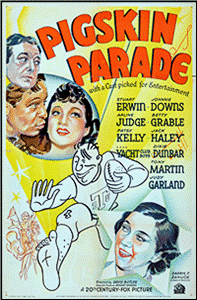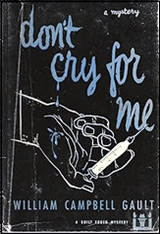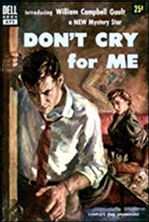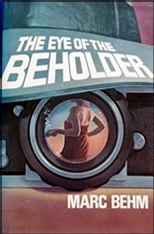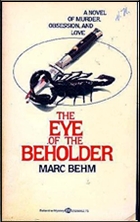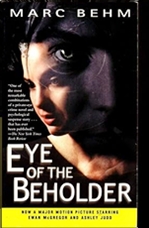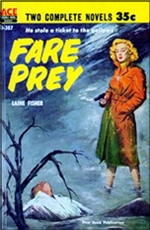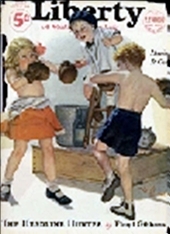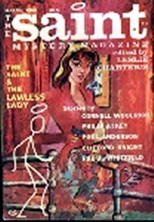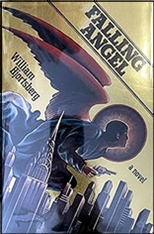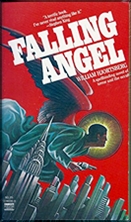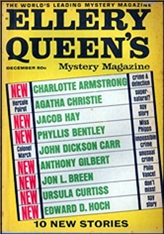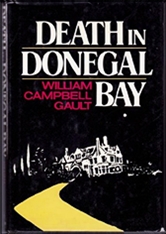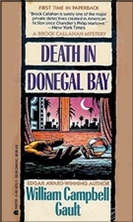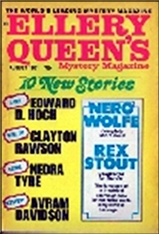REVIEWED BY DAVID VINEYARD:
WILLIAM P. McGIVERN – The Caper of the Golden Bulls. Dodd Mead, hardcover, 1966. Pocket, paperback, 1967. Film: Embassy Pictures, 1967, with Stephen Boyd, Yvette Mimieux, Giovanna Ralli, Walter Slezak. Screenplay by Edward Waters and David Moessinger. Directed by Russell Rouse.
All his life — all his adult life anyway — Peter had dreaded only three things: going to prison; losing his hair; and losing his keen physical interest in women. Now it seemed fairly obvious he had escaped — and would continue to escape — those inhibiting disasters. He had come through — that was his phrase for it. He had come through the battle intact.
For retired bank robber and cracksman Peter Churchman — aka the Black Dove to Scotland Yard, Interpol, and the Suretè — living in splendid retirement in Spain in contentment with his lazy almost lackadaisical lifestyle as a well to do expatriate is paradise enough. It is the comfortable reward for an intelligent and carefully managed life of crime ended before the inevitable happened.
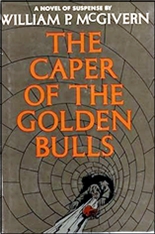
Neither greedy nor foolish, Peter settled for just enough. He has always settled for just enough, and that is about to prove a problem because life requires more commitment than just enough.
He might have known that pipers have to be paid eventually, and his piper is about to present the bill in the form of caper Churchman wants no part of: Grace, a beautiful married woman he won’t commit to, and blackmail that leaves him no choice in a violent and deadly game.
Every year the running of the bulls is held in Pamplona in Northern Spain. The ritual attracts crowds of American and European pleasure and thrill seekers made a sort of literary wine soaked pilgrimage by Ernest Hemingway’s lost generation novel The Sun Also Rises (aka Fiesta) during which drunken revelers either run the streets of Pamplona in front of the wild bulls ending in the ring where they play at amateur matadors before the real bull fights begin or drink and watch the fools get mauled.
For the week of the fiesta Pamplona’s population balloons, tourists get run down by the bulls and overcharged by the residents and the locals take in a good portion of their yearly income. Along the way is a genuine outpouring of faith and tradition for the religious holiday the week marks.
The running of the bulls coincides with a religious procession through the streets of the city displaying valuable religious art and brought to the small city for the Festival of San Fermin, the whole reason for the running of the bulls in the first place.
Part of the Fiesta is the statue of the Virgin and her diadem of jewels on display during the procession to the church, including treasures from all over Spain and Catholic Europe including the Golden bulls of Avignon sent by the Pope himself. A prize all briefly held in a bank vault in Pamplona.
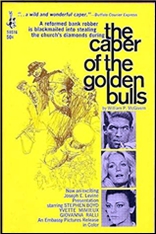
Which is why the Black Dove’s old partners in crime François Morel and Peter’s former mistress Angela have shown up with evidence that ties Peter to an old crime and with plans to crack the vault of the bank in Pamplona where the treasure will be kept.
And if things weren’t bad enough Peter’s married mistress Grace is pregnant, by her husband, and pressuring Peter to make things permanent and his good friend Antonio chief of the local policia is too nosy for anyone’s good.
Something has to give, and it may just be the Black Dove is well on its way to having its wings clipped before he can survive Morel and Angela and their crew, much less the police and Grace.
William P. McGivern hardly needs introduction. Best known for his tough suspense and crime novels like The Big Heat, Rogue Cop, and The Odds Against Tomorrow (all also classic films) he also wrote international intrigue, and in his early career had been a staple of the Science Fiction pulps. Late in his career he even wrote a mainstream bestseller or two. Caper is a quick book to read, around 60,000 words, 175 slender pages in paperback, but packs a tremendous amount of story and character development, as well as details about the intricacy of cracking a bank vault, much less outwitting blackmailers with murderous intent.
As should be expected with McGivern, the suspense is taut, the pace fast, the people involving, and the climax satisfying, all anyone can ask of a caper novel.
It was a natural to be developed for the big screen with Stephen Boyd well cast as Peter, Yvette Mimieux as Grace (who plays a bigger role ultimately than Peter can expect), and Walter Slezak as Antonio the local police chief. It’s not a great film, but it does manage to capture the characters, adults in emotion and action for once, and the suspense of the novel as well as the color and confusion of the crowded streets of the Festival of San Fermin.
The book on the other hand is a small gem, a delightful caper novel that manages to be both tough and honest about crime and criminals and give the reader a charming likable if not entirely morally upright protagonist, somewhere between one of Eric Ambler’s able criminals and a more realistic modern Raffles.
One of the great pleasures of the book is just how much McGivern sketches in with a few deft strokes without turning the plot into a travelogue or padding it out with overwritten asides. It is more picaresque than hard-boiled, more To Catch a Thief than Richard Stark’s Parker, an appetizer and not a meal, but sometimes you are in the mood for a well chosen nosh and not a seven course feast.
This one should both whet and satisfy your appetite.
